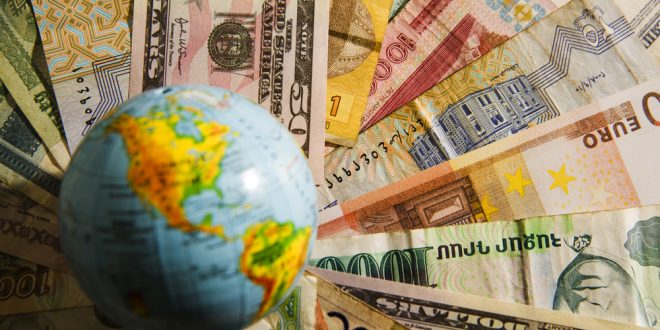US monetary policymakers opted a 75bps rate hike. Markets expected this move; a historically large hike. Jerome Powell explained that Fed would likely stop hiking once inflation is controlled. If unemployment rises, the job market weakens, and the US falls into a recession, Fed would ease policy due to lower consumer spending. The inverted yields curve plus the week’s GDP data provide evidence that the US economy is technically in a recession, this conclusion is categorically rejected by US President Joe Biden and Secretary Janet Yellen.
Gold
Gold continued to shine all the week, trading from around $1720 on Monday, up to $1768 per ounce on Friday. US yields erased earlier gains, back near recent lows. Gold prices benefited from Friday’s weaker US dollar during the American session.
Following the GDP figures, the reaction was what markets would have expected, so, on the back of negative GDP, prices took a second major step higher for the week, breaking above $1750 within an hour of the report.
Commodities
The retreat of most commodity prices in July, with wheat and oil among the decliners, might be an indication that inflation will soon reach its peak, and some commodities could be in store for further losses for the remainder of 2022.
Commodities look to post a second straight monthly loss following six consecutive months of gains. The S&P Goldman Sachs Commodity index has lost nearly 5% this month as of July 26, but remains more than 20% higher this year.
European stocks
It was a very interesting week for stocks in Europe, mainly because its beginning came totally different from its finish. European markets closed mixed on Monday because of anticipations on a big week of corporate earnings and investors were keen to await the rate hike decision by the US central bank. European markets were cautious on Tuesday as investors digested a fresh batch of earnings.
Boosting sentiment, the Eurozone economy grew much faster than expected in the second quarter, with gross domestic product rising 0.7% quarter-on-quarter in the April-June for a 4.0% year-on-year gain, strongly beating expectations of a 0.2% quarterly and 3.4% annual gain.
On Friday, The Stoxx 600 surged 1.3%, with oil and gas stocks climbing 2.9% to lead the gains as almost all sectors finished in the green territory, apart from health care, which slipped 0.4%. The pan-European benchmark has risen 6.3% in July, recording its best month since November 2020.
European shares rose on Friday, July 29, and logged their first monthly gain in four as strong earnings from corporate Europe overshadowed fears of a global recession, with some strong economic data also lending support. The pan-European STOXX 600 was up 1.3% to a near two-month high, and logged its best monthly performance since November 2020.
During the week also, European stock exchanges faced their worst nightmare as EU ticker tape gets more support in Brussels. Stock exchanges are ferociously fighting against calls for a consolidated tape that would create a price feed for stock trades across the EU’s disparate trading venues. They fear the tape could eat into lucrative revenues from trading data, possibly even pushing smaller exchanges out of business.
Oil
International crude-oil futures settled higher on Friday, contributing to a gain for the week, but worries about a recession pulled prices lower for the month.
Traders also awaited a decision on production levels by major producers, with the Organization of Petroleum Exporting Countries and their allies scheduled to meet on August 3.
WTI Crude for September delivery gained $2.20, or 2.3%, to settle at $98.62 a barrel on the New York Mercantile Exchange. Prices based on the front month ended 4.1% higher for the week, but down nearly 6.8% for the month, according to Dow Jones Market Data.
Global benchmark September Brent crude rose $2.87, or 2.7%, to end at $110.01 a barrel on ICE Futures Europe. Front-month prices climbed 6.6% for the week and fell 4.2% for the month. The October contract BRNV22, -0.27% settled at $103.97, up $2.14, or 2.1%.
Investors await the meeting of OPEC+ but rumors that OPEC+ is planning on leaving its production targets unchanged have helped to bolster crude prices.
Wall Street
The last week of July came with an overwhelming confluence of economic data, earnings reports, Federal Reserve announcements and spending deals in Congress.
The impact of the past five trading days will echo for the next several weeks around the abandoned halls of Wall Street and Washington DC as politicians and investors retreat to the Hamptons or Martha’s Vineyard or wherever they summer.
The Nasdaq and the S&P 500 indexes rose on Friday and were seen on track for their biggest monthly gain in nearly 20 months, after positive earnings updates from Amazon.com and Apple, on hopes of a less aggressive monetary policy.
Cryptocurrencies
In the past five trading days, the total cryptocurrency market added a considerable $40 billion to its total capitalization as the majority of it is remained in the green. Bitcoin’s dominance is a commonly-used metric that gauges its share relative to that of the entire market. Over the past seven days, it declined slightly, which means that the primary cryptocurrency didn’t fare as well as altcoins. As a matter of fact, BTC is up 4.5% on the week, whereas ETH, for example, is up 10.4%.
Bitcoin managed to reclaim the important $24K level and is currently trading slightly above it. The cryptocurrency declined halfway through the week, dipping below $21,000 on Tuesday, but the bulls regrouped and staged a recovery, pushing the price towards its current levels.
 Noor Trends News, Technical Analysis, Educational Tools and Recommendations
Noor Trends News, Technical Analysis, Educational Tools and Recommendations





